Its a Great Feeling
6.2 /10 1 Votes6.2
Country United States | 6.2/10 IMDb Genre Comedy, Musical Duration Language English | |||||||||||||||||||||||||||||||||
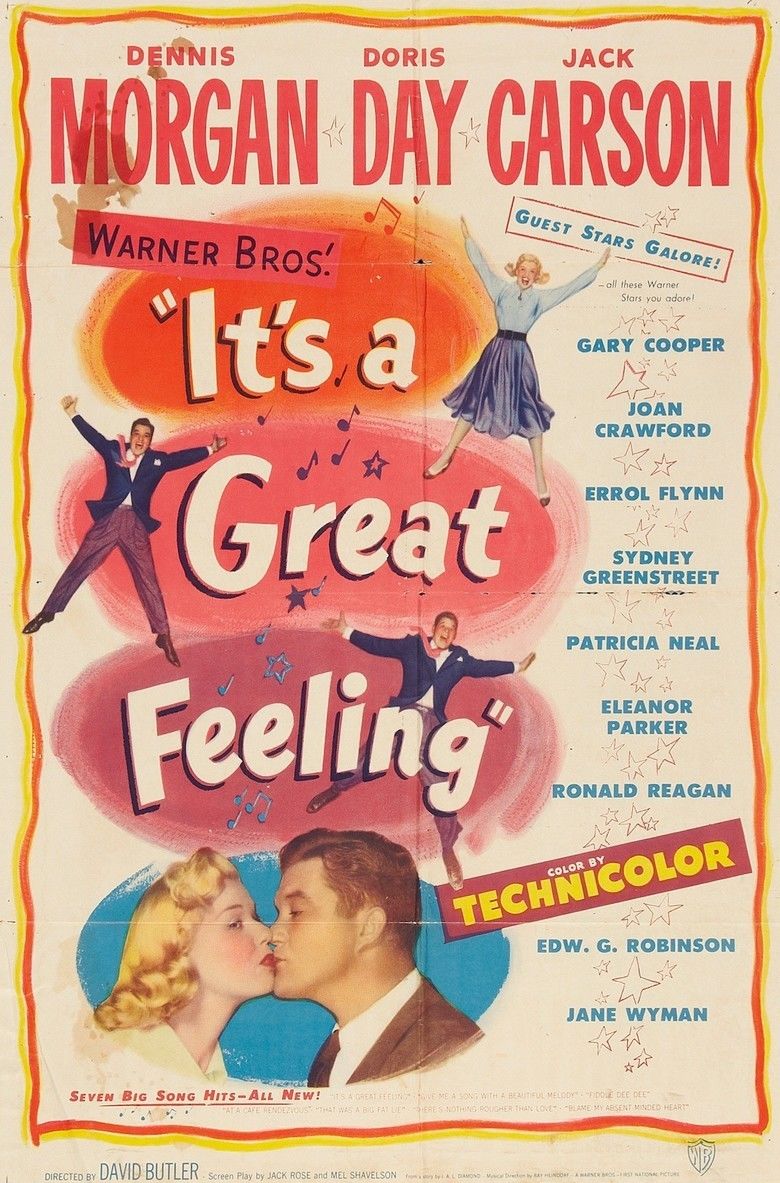 | ||||||||||||||||||||||||||||||||||
Release date August 1, 1949 (1949-08-01) Cast (Dennis Morgan), (Judy Adams), (Jack Carson), (Arthur Trent), (RR Information Clerk), (Grace) Similar movies Frozen , Pitch Perfect 2 , Birdman , Entourage , Aladdin , Cinderella Tagline Guest stars galore! | ||||||||||||||||||||||||||||||||||
It's a Great Feeling is a 1949 American musical comedy film starring Doris Day, Jack Carson, and Dennis Morgan in a spoof of what goes on behind the scenes in Hollywood movie making. The screenplay by Jack Rose and Mel Shavelson was based upon a story by I.A.L. Diamond. The film was directed by David Butler, produced by Alex Gottlieb and distributed by Warner Bros.
Contents
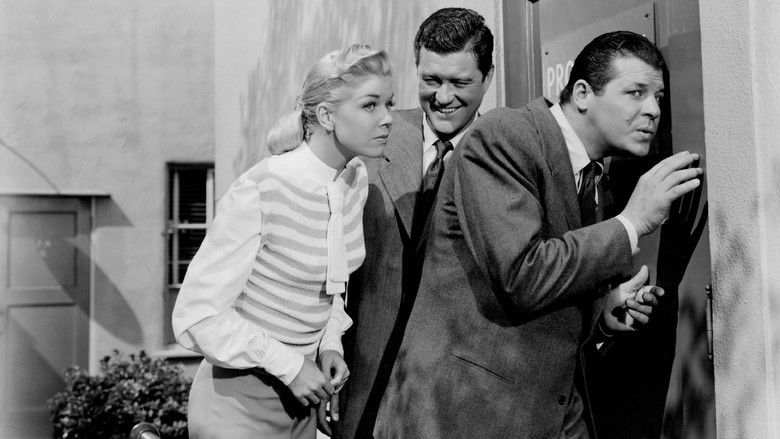
It's a Great Feeling was Day's third film (and her third pairing with Carson) and the first to bring her widespread notice. It's a Great Feeling is a "Who's Who?" of Hollywood in its heyday and glorified the studio system at the peak of its golden age.
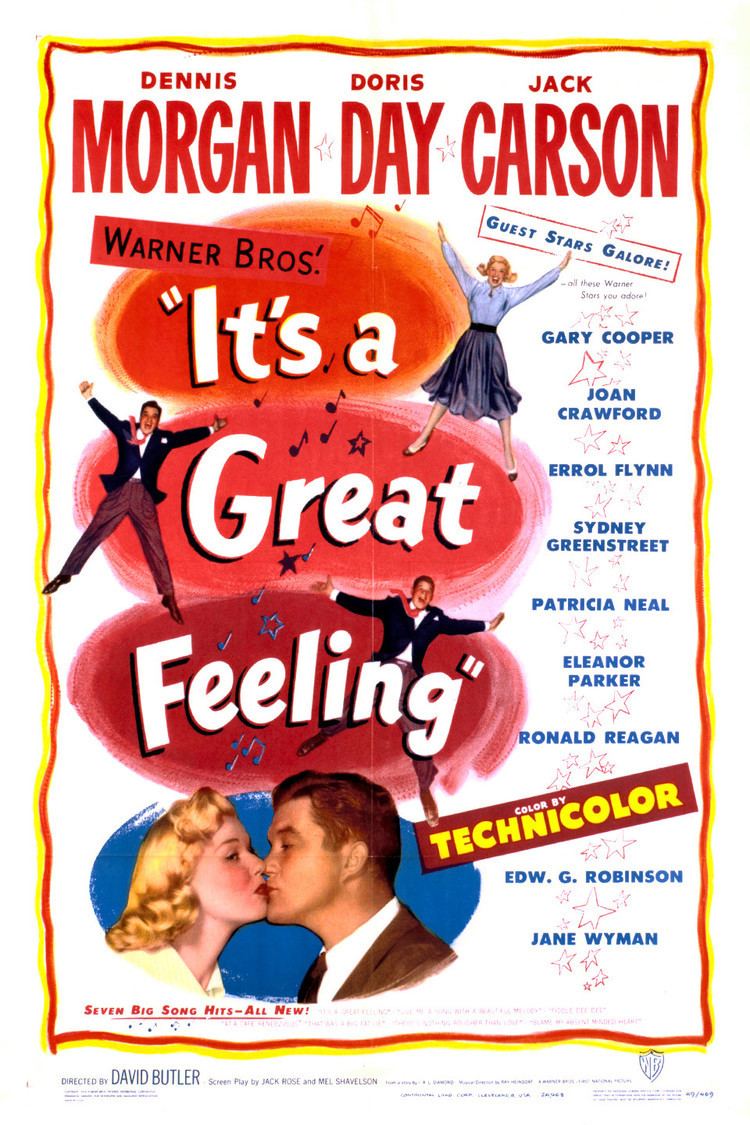
Plot
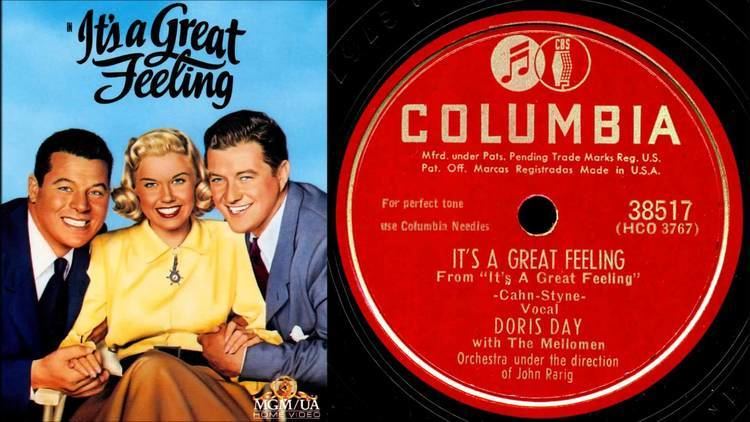
The film begins with a succession of real-life film directors - including Michael Curtiz, King Vidor, and Raoul Walsh - refusing to helm a new Warner's flick, Mademoiselle Fifi, because Jack Carson has been signed to star in it. Frustrated, fictional studio head Arthur Trent (Bill Goodwin) finally decides to let Carson direct it. Seeking the perfect co-star for himself and fellow lead, frenemy Dennis Morgan, Carson finds her in the person of studio commissary waitress Judy Adams (Doris Day). Judy has been in Hollywood for three months without even one audition, and sneaks her way into Carson's office, where she forces him to give her a chance. A self-proclaimed liar, Carson advises her to pose as his secret bride to Morgan. He, however, does not fall for Judy's act and reveals Carson as the liar Judy did not know he was. Following an angry outburst, she leaves the studio, having felt used by the two actors for their entertainment.

Moving on, Carson continues his search for his romantic interest in the film, but nobody seems to be willing to work with him. When Jane Wyman is offered the role, she even faints. Dennis suggests to Carson that he should cast an unknown, because only outsiders are unaware of his image and would be willing to work with him. Judy is the first person that comes to their mind, though they do not know that - because of them - Judy has become disillusioned by Hollywood and is set to return to her home town, Goerke's Corners, Wisconsin. Both Carson and Morgan want to be the one who has discovered Judy officially, and go their separate ways to convince Judy to return to Warner Brothers and assume the role. With the help from Danny Kaye, both men, having arrived at the station at the same time to stop Judy from leaving, succeed in making Judy believe that they will help her get her big break in the movies.
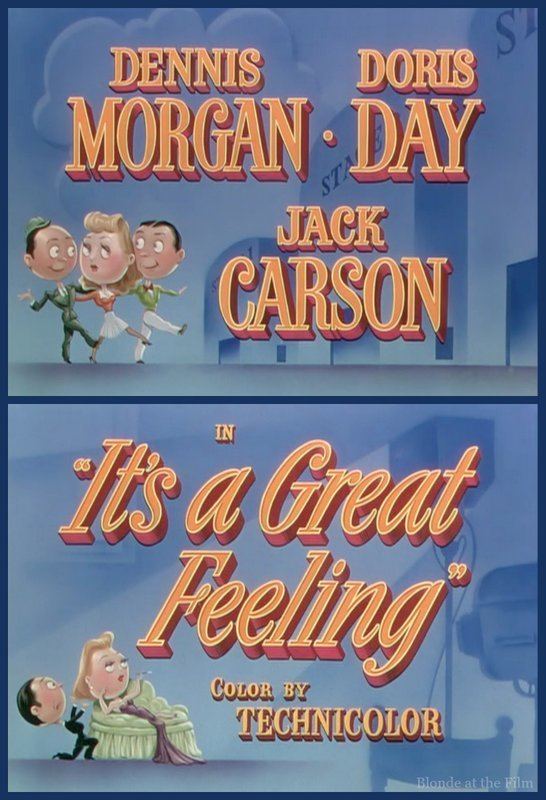
Carson and Morgan start by dressing Judy as a film star in order to impress Trent, the head of casting. At a shop, Joan Crawford notices that Judy is taken advantage of, and condemns both men for it, before leaving. Carson remembers that Trent likes to discover his own talent, so he dresses Judy in a number of different guises - such as an elevator operator, a cab driver and a dentist assistant - in the hope Trent will see her, appreciate her potential, and insist Carson cast the unknown. Unfortunately, all Trent keeps seeing is a pretty blonde with a goofy smile and blinking eyes. Morgan, having lost all hope, discourages Judy from becoming an actress, but she is now determined to have her big break, explaining the hard work she has done to afford acting and singing lessons, as well as moving to Hollywood. By this time, both men are now not only fighting over discovering Judy, but also for her romantic attention.
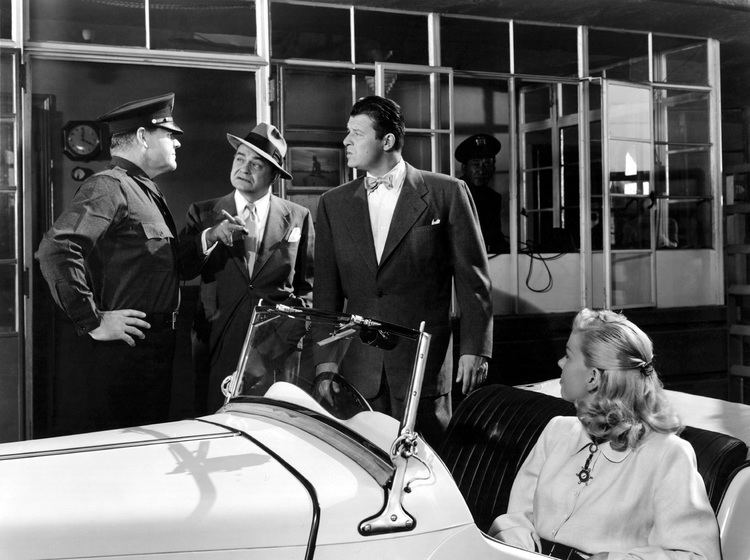
Carson and Morgan attempt to arrange a screen test for Judy, and continue their schemes in order to impress her. They are stopped at the studio, but Edward G. Robinson helps them sneak in. In the studio, they arrange for Judy to perform the song "That Was a Big Fat Lie" on camera directed by a reluctant Ray Heindorf. The screen test undergoes technical difficulties, which startles Trent when seeing it, and, coming on top of his "visions" of the same face everywhere (when Carson and Morgan planted Judy all around him), results in a nervous breakdown and a cancellation of production of Mademoiselle Fifi. As a final attempt, Carson and Morgan conspire to disguise Judy as a famous French film star with dark hair named Yvonne Amour - and an inaccurate accent - but Trent still manages to recognize her despite the great amount of media coverage that 'Yvonne' is receiving, including a meeting with Eleanor Parker and Patricia Neal and a performance of the song "At the Cafe Rendezvous".
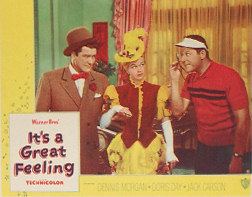
Upset with all the backstage shenanigans she's been forced to endure, Judy returns home to Goerkes Corner to marry long-time sweetheart Jeffrey Bushdinkle. Carson and Morgan consider stopping her, but Judy's friend Grace (Claire Carleton) makes them realize that she will be much happier with her fiance in a small town than an uncertain career in Hollywood, and they step back. Judy catches them promising another girl a career in the pictures, confirming her doubt of having been used by the actors. She leaves in tears and coincidentally shares the train with Trent, who fears that Judy is making another attempt to impress him. Now realizing her talent, Trent offers Judy a career in pictures, but she thinks he is lying as well and rejects him. Nonetheless, Trent announces that the film is back in production with Judy Adams as the only contender for the lead role. Carson and Morgan rush to Goerkes Corner to share the news with Judy, but realize that they have to interfere with her wedding, and decide to leave to let Judy lead a small town life. Their curiosity as to what her fiance has to attract her so strongly is satisfied when his face is revealed to be that of Errol Flynn.
Cast
Cameos
Many of the studio's most popular stars and directors make cameo appearances throughout the movie. Among them are:
Production
The film's working title was Two Guys and a Gal. The film resembled Day's early career as a waitress struggling to get into the pictures and nearly landing her big break when prepared to leave Hollywood. It's a Great Feeling was Day's third film and third collaboration with Carson. On working with him, Day wrote in her autobiography:
"He helped me enormously with my technical indoctrination into movie acting. He taught me dozens of tricks about how to move to precise camera marks without actually looking for them, how to handle myself in close-ups so that my face or profile rather than the back of my head would be in a shot, how to sustain the evenness of a performed scene.... Since we were also going together, we'd often discuss some of these things in the evening, and there's no doubt that my relationship with Jack helped me considerably in my early going."In June 1948, Day's participation in the film was confirmed. By the time, Carson and Morgan were already cast. By the time, the film also went under the title Two Guys of the Nineties and, due to insistence of Carson and Morgan as Two Guys from Hollywood (though Morgan had previously stated in an interview that he would never star in another film with 'Two Guys' in the title).
Musical numbers
Doris Day solos for "At the Cafe Rendezvous", "That Was a Big Fat Lie", and "Blame My Absent-Minded Heart" while Jack Carson sings "Fiddle Dee Dee" and Dennis Morgan renders "Give Me a Song with a Beautiful Melody". The three join vocal forces for "There's Nothing Rougher than Love". Other tunes include the title number, "It's a Great Feeling".
Reception
Variety noted, "Joan Crawford (as herself) does a pip of a bit in a swank gown shop with the three principals, rating plenty of howls." In his book on Doris Day's career, author Tom Santopietro writes that the Crawford's sendup of her own "notoriously dramatic" screen image is the funniest bit in the film. Crawford supposedly overhears Jack Carson and Dennis Morgan discussing Doris Day and thinks they are taking advantage of her. She automatically launches into a clichéd, melodramatic speech typical of her screen persona (in this case from Mildred Pierce,) and furiously slaps both Jack Carson and Dennis Morgan. Carson asks "What’s that for?" and Crawford smiles, shrugs and says: "I do that in all my pictures!"
Awards and nominations
The title tune "It's a Great Feeling" (written by Jule Styne and Sammy Cahn), received an Academy Award nomination for Best Song.
References
It's a Great Feeling WikipediaIts a Great Feeling IMDbIts a Great Feeling themoviedb.org
